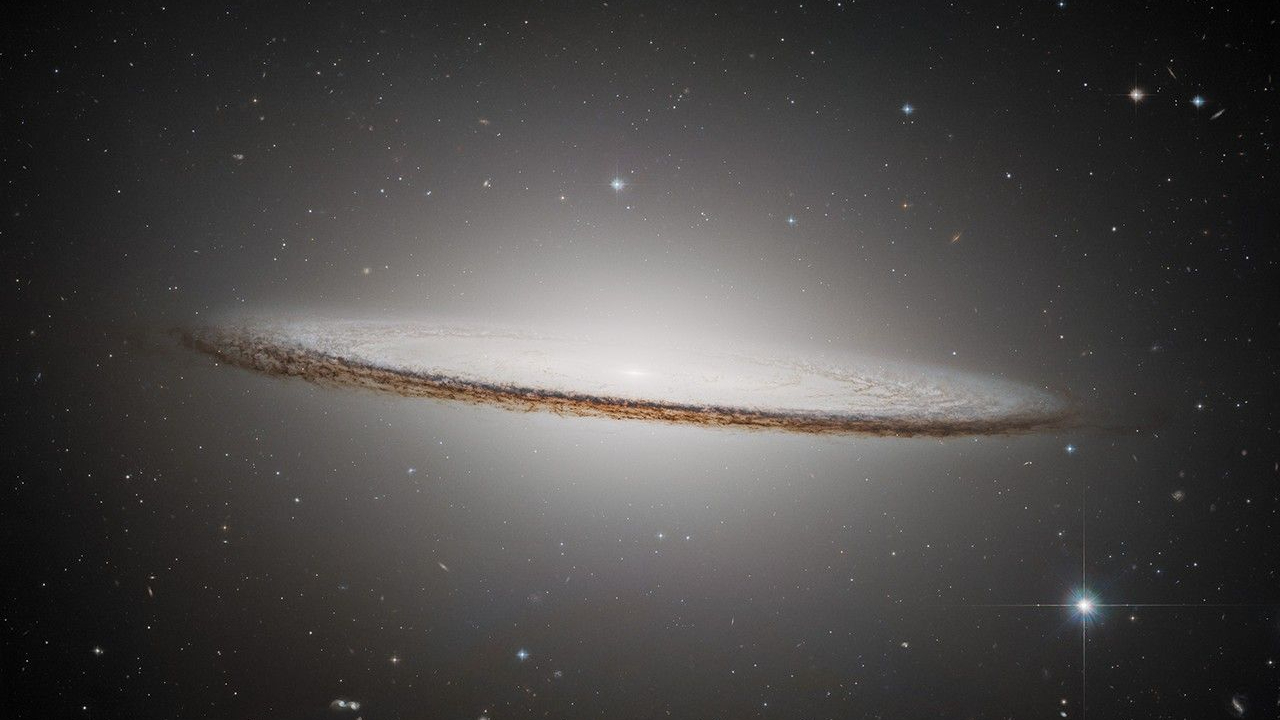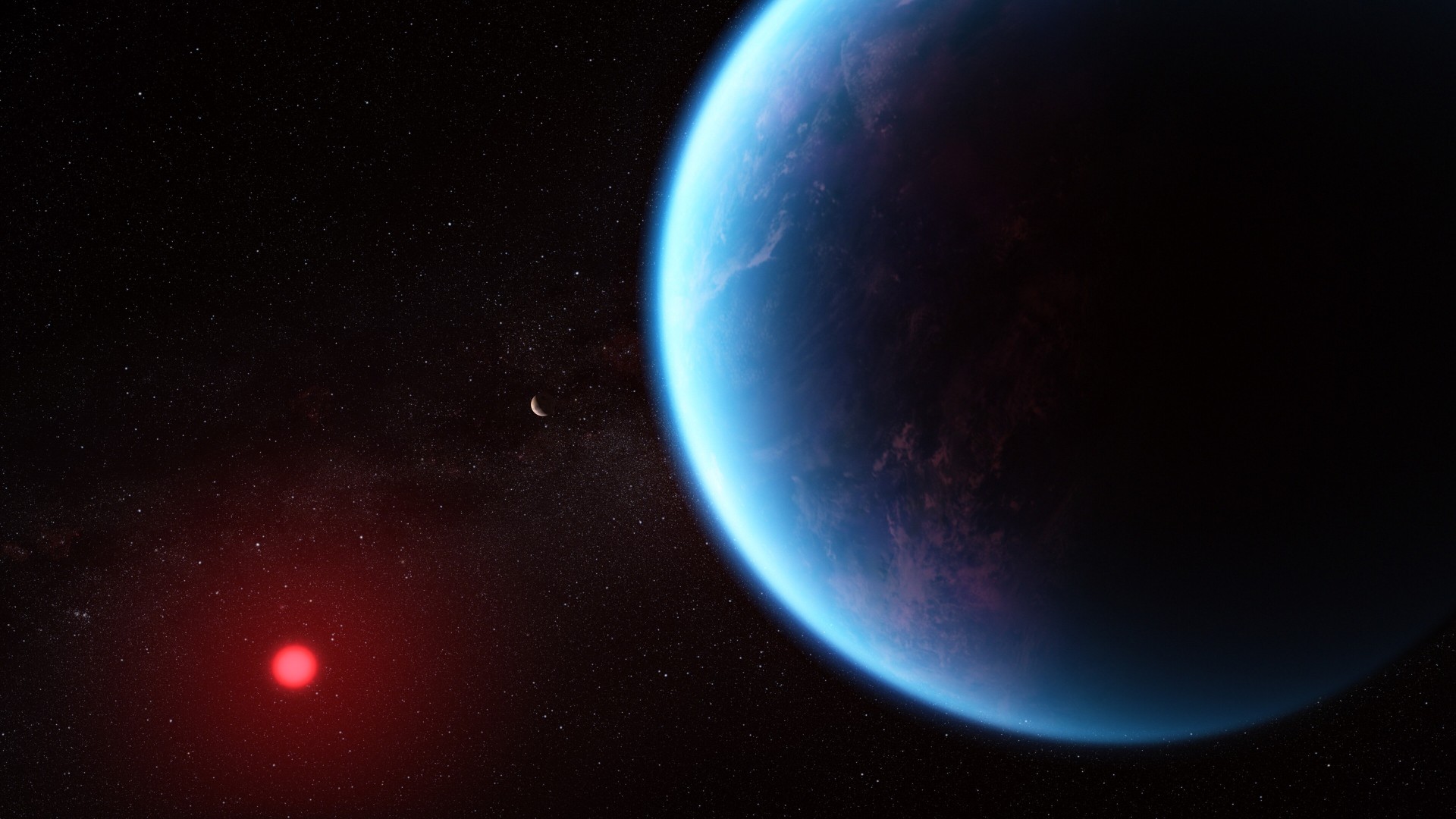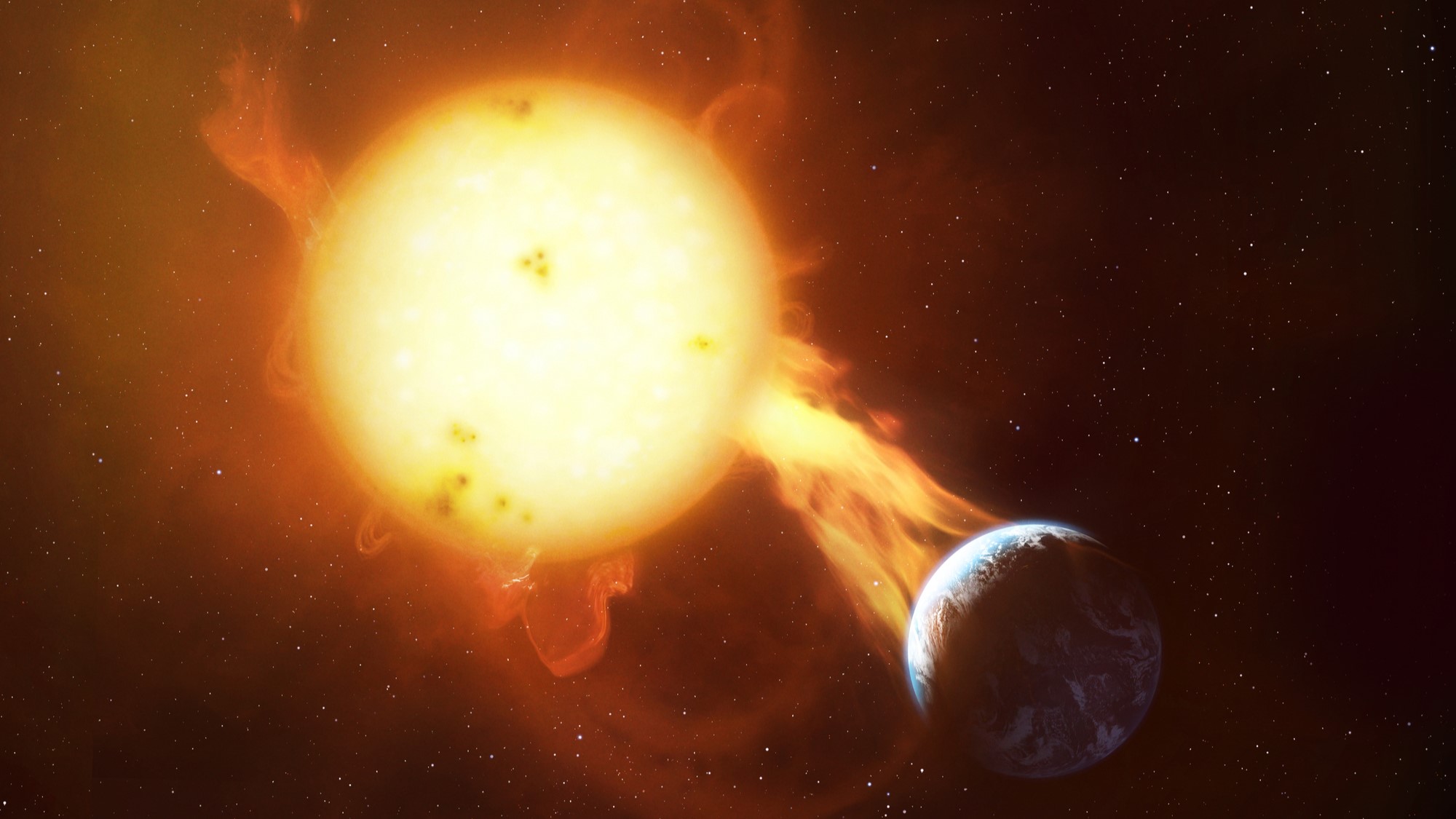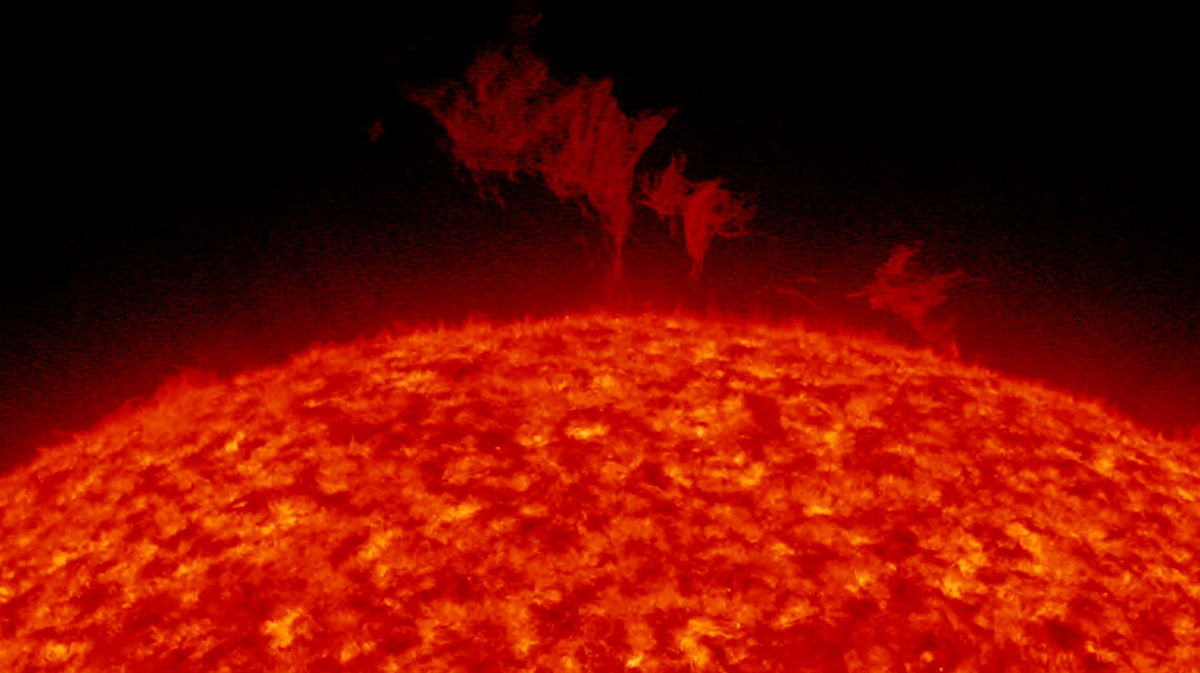Strange sphere-studded rock on Mars found by NASA's Perseverance rover
The rock has hundreds of spherules on it, some of which have tiny pinholes.
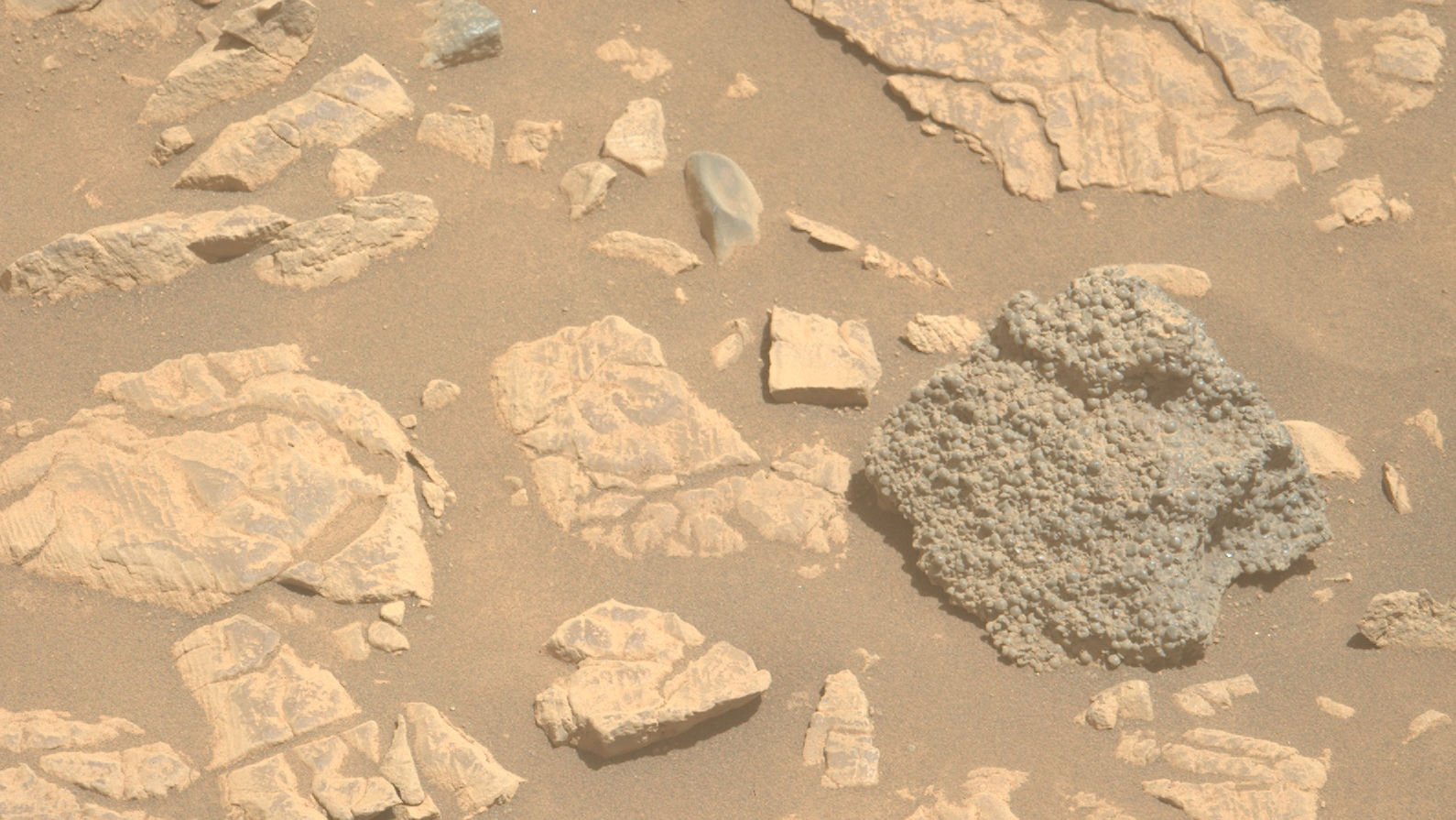
NASA's Perseverance rover has encountered another rock on Mars that has left scientists puzzled.
Named "St. Pauls Bay" by the mission team, the Mars rock features hundreds of millimeter-size dark gray spheres, some of which have tiny pinholes. Perseverance discovered this rock on March 11 on the rim of the Jezero Crater, an ancient lakebed that the rover has been exploring since 2021 for signs of past microbial life. Scientists say determining the geological origins of this area's features could provide valuable insights into how rocks in the region evolved over billions of years.
"Placing these features in geologic context will be critical for understanding their origin, and determining their significance for the geological history of the Jezero crater rim and beyond," the Perseverance team wrote in a statement.
The St. Pauls Bay rock is located on the slopes of the Witch Hazel Hill area, a scientifically significant rocky outcrop spanning more than 330 feet (101 meters), with each of its rock layers acting like a page in the book of Mars' history. According to the statement about the new sphere-studded specimen, however, this rock may have floated in from elsewhere.
Speaking of elsewhere on the Red Planet, NASA's Opportunity and Curiosity rovers previously spotted similarly textured rocks near their respective landing sites, Endurance and Gale craters, which scientists have interpreted as concretions formed by the interaction of groundwater circulating through the rocks' pores. Last year, Perseverance itself spotted popcorn-like textured rocks that also suggest groundwater once flowed through them.
However, these formations can also arise from volcanic processes, such as the rapid cooling of molten rock droplets during an eruption, or from meteorite impacts, upon which vaporized rocks condense.
"Each of these formation mechanisms would have vastly different implications for the evolution of these rocks, so the team is working hard to determine their context and origin," the mission team said in the statement.
Get the Space.com Newsletter
Breaking space news, the latest updates on rocket launches, skywatching events and more!
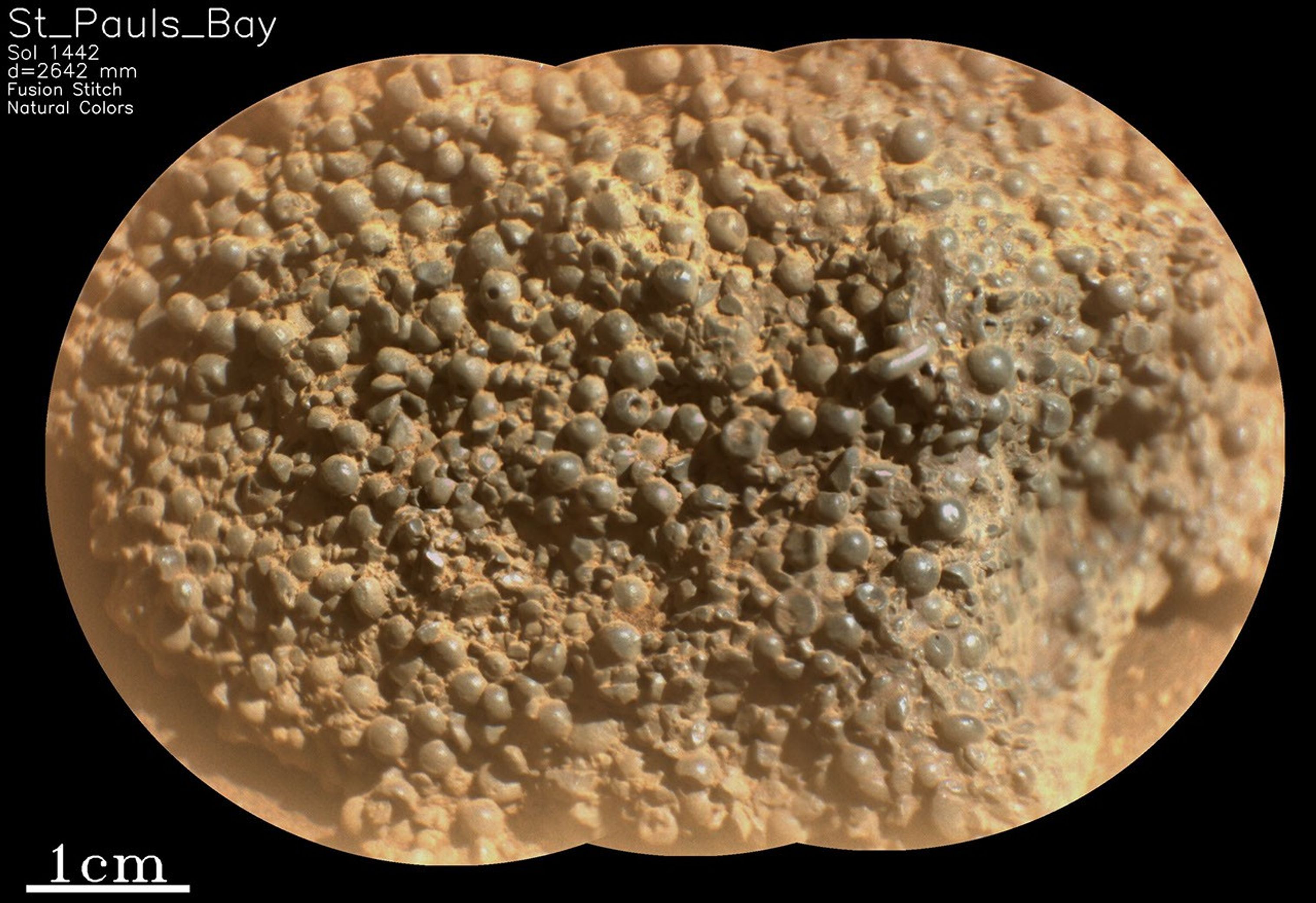
The rover is currently on a bonus mission exploring the rim of Jezero Crater, where ancient Martian groundwater may have interacted with rocks in a way that created an environment completely different from what the rover had previously explored on the crater floor. The samples it has collected, including one with intriguing features resembling leopard spots and poppy seeds which scientists suspect could be evidence of ancient microbial activity, are in 30 cigar-sized tubes awaiting pickup by NASA's complex Mars Sample Return mission.
The ambitious effort is undergoing an overhaul after it ran into cost and schedule overruns. Former NASA administrator Bill Nelson announced earlier this year that the agency is leaving two alternate mission plans for the Trump administration to return the samples home, each of which would require Congress to allocate $300 million for it to start launch proceedings by 2030 and return the samples between 2035 and 2039.
Join our Space Forums to keep talking space on the latest missions, night sky and more! And if you have a news tip, correction or comment, let us know at: community@space.com.

Sharmila Kuthunur is a Seattle-based science journalist focusing on astronomy and space exploration. Her work has also appeared in Scientific American, Astronomy and Live Science, among other publications. She has earned a master's degree in journalism from Northeastern University in Boston. Follow her on BlueSky @skuthunur.bsky.social
You must confirm your public display name before commenting
Please logout and then login again, you will then be prompted to enter your display name.

